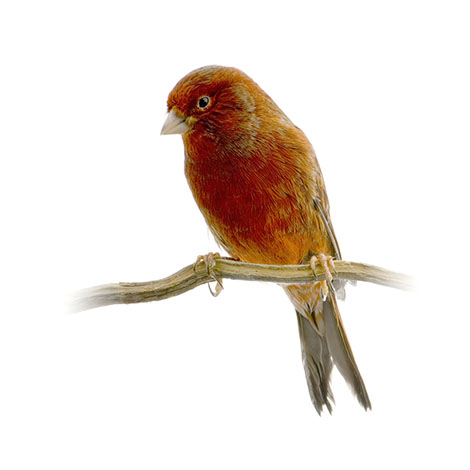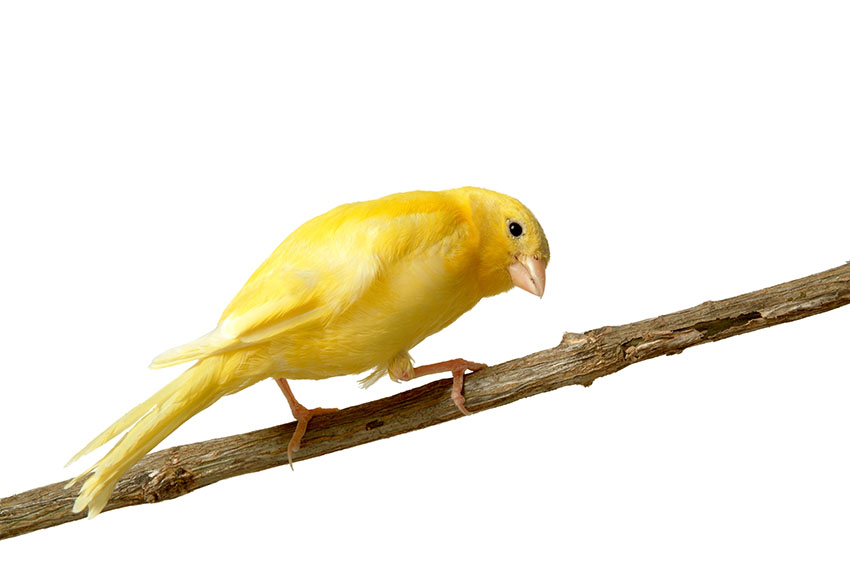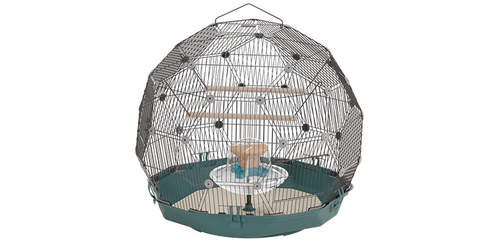Many people design and build their own aviaries; but basic structures can be bought ‘flat-pack’ style. These usually consist of metal or wooden frames covered in mesh (usually two layers - one on the outside, one on the inside). The aviary will need plenty of covered space too, for roosting and nesting. The main area - i.e. the part in which the birds can enjoy free-flight - should be at least 2 metres wide and tall, and a metre deep.
Aviaries allow the birds to enjoy natural sunlight (and the vitamin D it provides), and to shelter from it too should they need to. In a bird room the sun is more problematical, as it can shine through windows, overheating the finches. For this reason a bird room should have light-coloured blinds or screens fitted to the windows, to reflect the sunlight and prevent the space from becoming a greenhouse.

Outdoor finch accomodation needs to be neither too sunny nor too dark
Aviary Plans
The design of your aviary will depend on several factors – the number of birds you want to keep, the mix of species, the outdoor area available, the amount you are able to spend on it, and the views of your family and neighbours!
Before you start building, check local by-laws or mortgage/rental contracts to make sure there are no issues around bird-keeping, noise or planning permission. (In the UK, no planning permission is required for a structure built on your own land under 2.5 metres high.)
Building an Aviary
If building from scratch, a cement or rubble foundation works best, with a concrete floor on top. This can be hosed down easily, and will not be the muddy, disease-ridden quagmire that an earth floor can become in a wet summer. The concrete will also prevent mice and rats from burrowing under the aviary, a precaution that can be reinforced by lining the foundation pit with fine mesh before adding the concrete.
If you leave holes in the concrete you’ll be able to plant some shrubs or small trees in the aviary (see Aviary Trees, below). Their roots will reach through the anti-rodent wire mesh. Gravel or sawdust can be spread on the floor, but remember that you will have to clean the space out, and the more floor-lining you use, the more there is to clear out.
The frame of the aviary can be stone, metal (non-rusting) or plastic. The walls and roof should be made from an appropriate galvanised wire mesh. The wire needs to be at least 16-gauge - anything thinner is fragile, and if anything falls against it, holes can easily open up at the sides. Also, if you’re keeping small parrots such as budgies in your aviary too, they will chew through anything thinner than 16-gauge.
Many keepers paint the outside of the mesh with a dark matt paint, to reduce glare. The paints must be of a non-toxic, weatherproof, child- and animal-friendly variety.

Any paint used on perches, bars and other fitments and fittings must be non-toxic and weatherproof
The door of an aviary can be the most challenging part of the design. A ready-made one is a handy short-cut, and a sliding structure is the most efficient. Some sort of porch area, to accommodate an inner and outer door, will prevent birds from escaping.
You will need to build a covered space in the aviary, to enable the finches to escape the ravages of the weather. This should take up at least a third of the area. Use corrugated plastic panels or untreated hardwood to make a roof and at least two walls. The area does not have to be closed off completely – it’s a wind and sun shade, not simply a place to hide. Additional, removable wall sections (with holes for entry and exit) and a bit of insulation are necessary for the colder months.
Having said that, if your aviary is a big one, a permanent indoor space is a good option – somewhere for the birds to escape the outdoors completely if they want to, and to nest. (See Outdoor Heating, below).
Any roof you place over the aviary should have its edges hanging clear of the aviary walls for drainage. If you’re keeping finches and small parrots in adjacent aviaries, or by partitioning the space, use a double layer of mesh between the two avian camps, to prevent the parrots’ beaks having an opportunistic nip at a stray finch leg.





Comments
Kim, 26 March 2023
Sometime in the next 3 months I will be looking for someone to build an aviary/atrium for me for small birds... I have some design ideas and specs.. when responding to this email please put atrium in the subject line. Thank you
John, 17 May 2020
Hello I am looking at someone to come and design and build an aviary for my macaw and two Amazon’s my garden is quite small so would like some help in this many thanks
John, 8 October 2018
i live in the south east with a south facing garden ,in the summer the sun is very intense especially on the right hand side of the garden so ,would it be better to place a breeding shed on the left hand side of the garden ? which still receives sun but nowhere near as intense as the right hand side